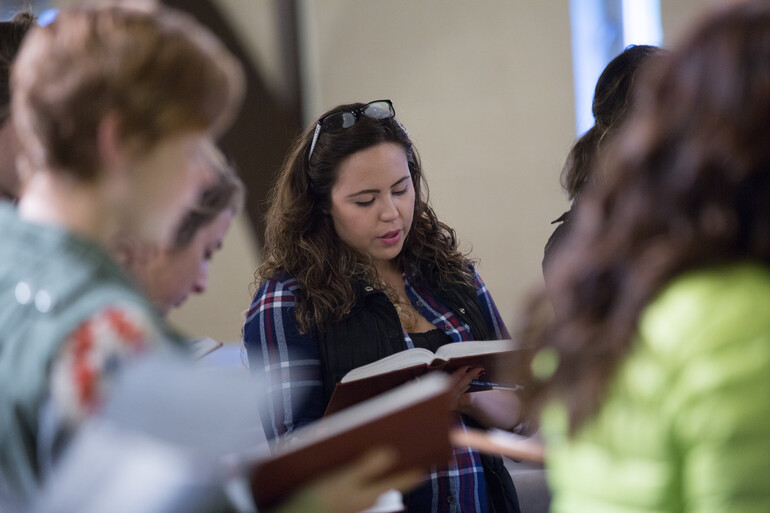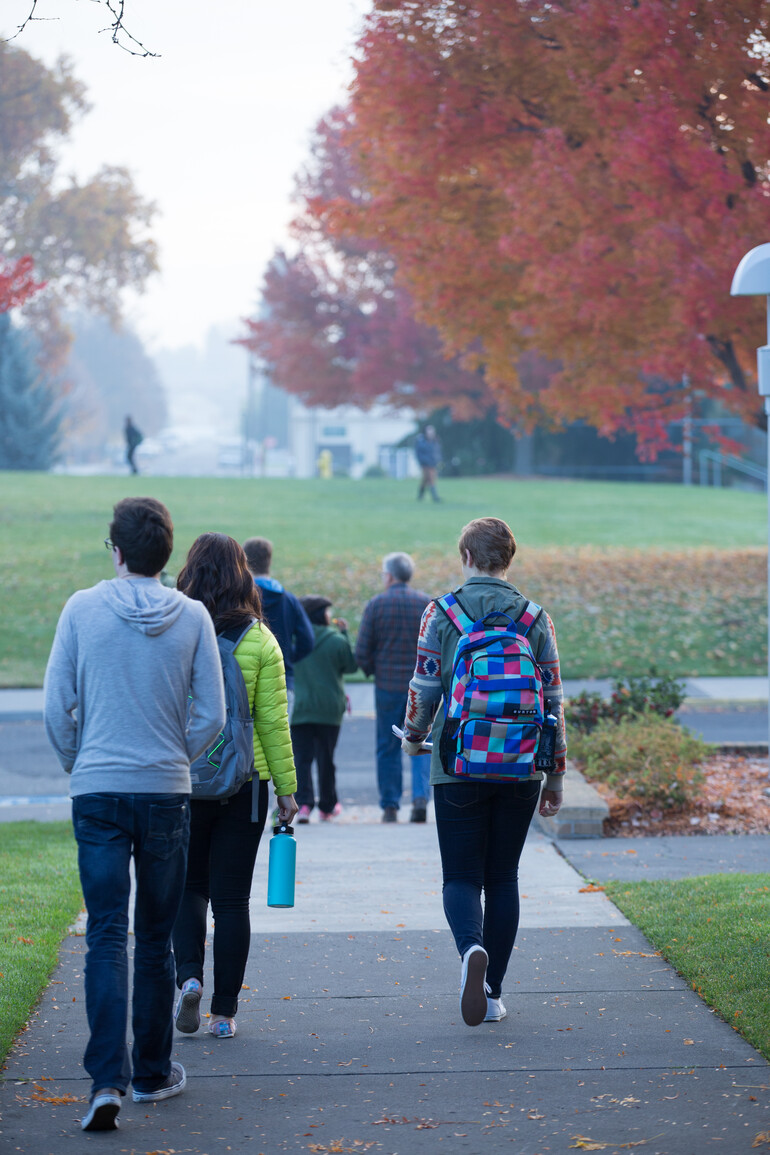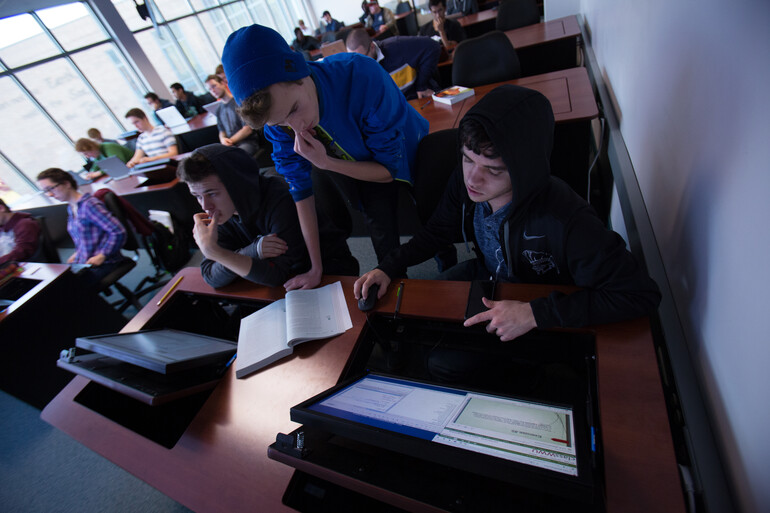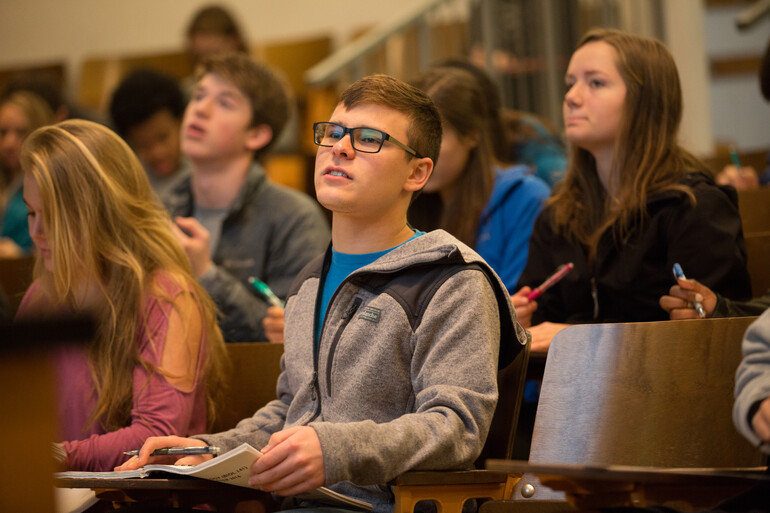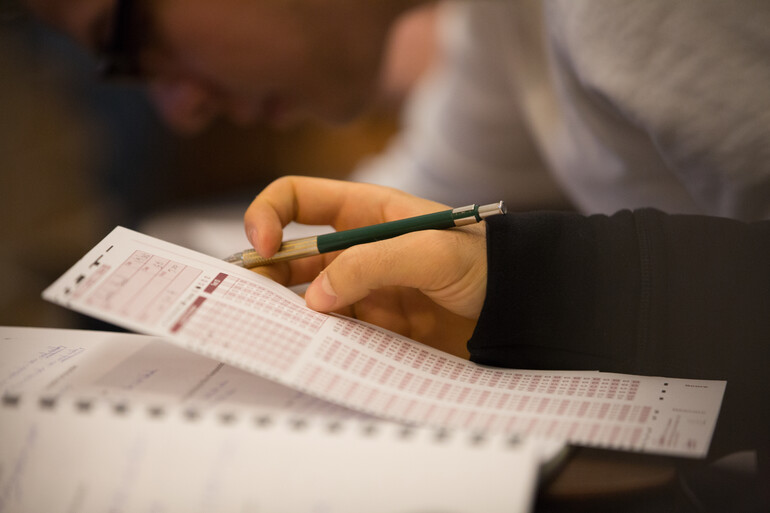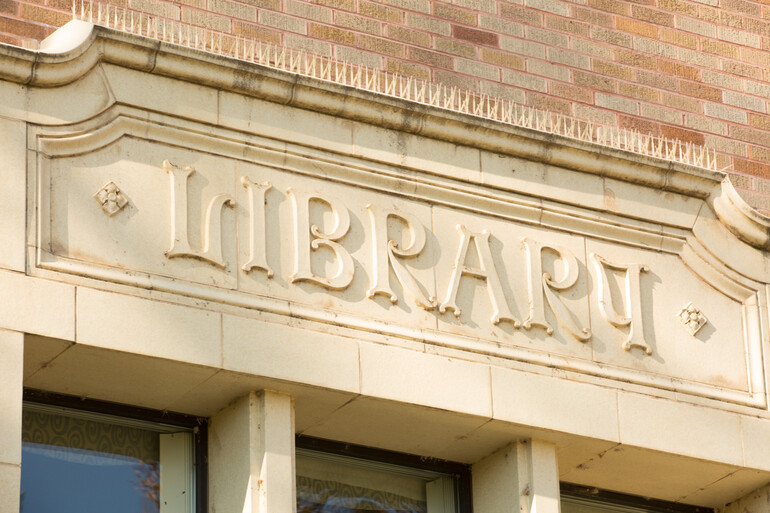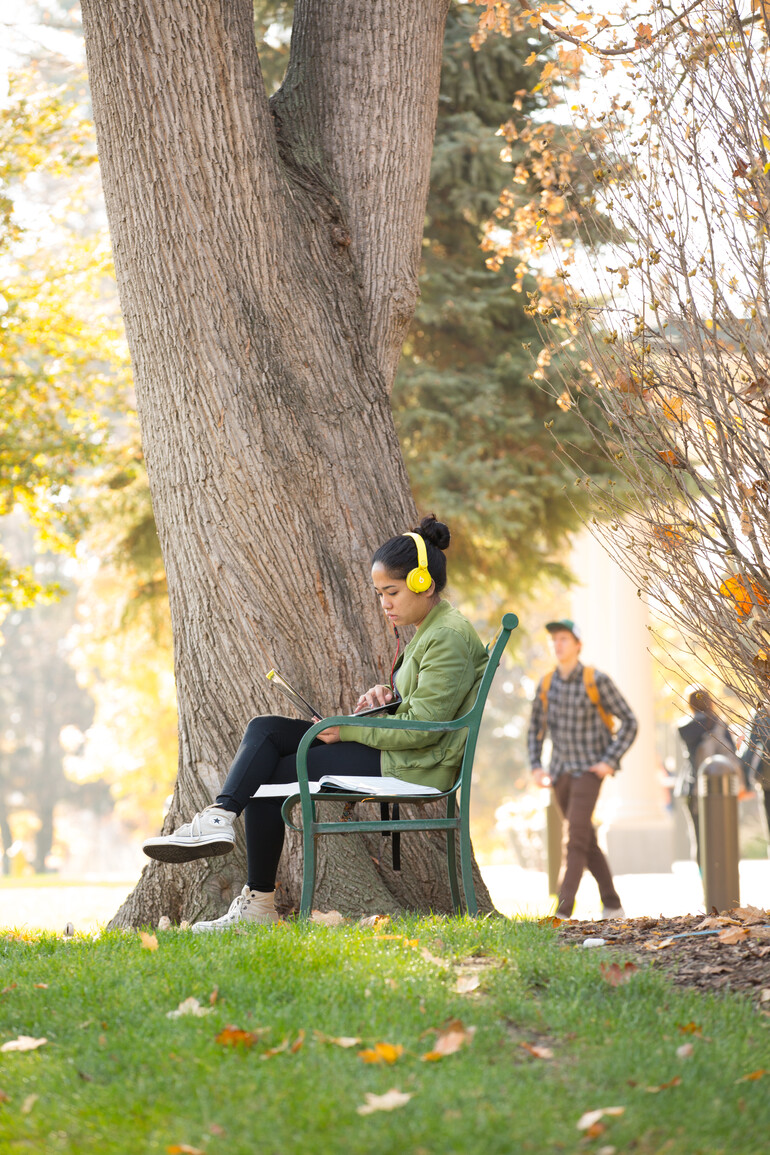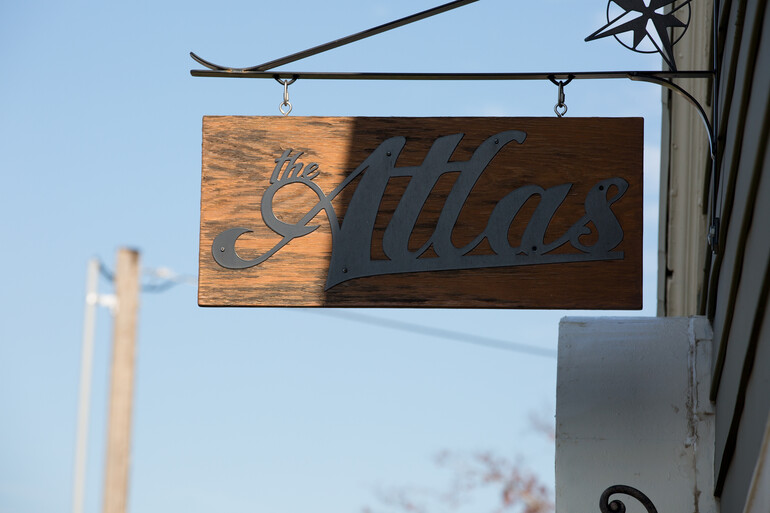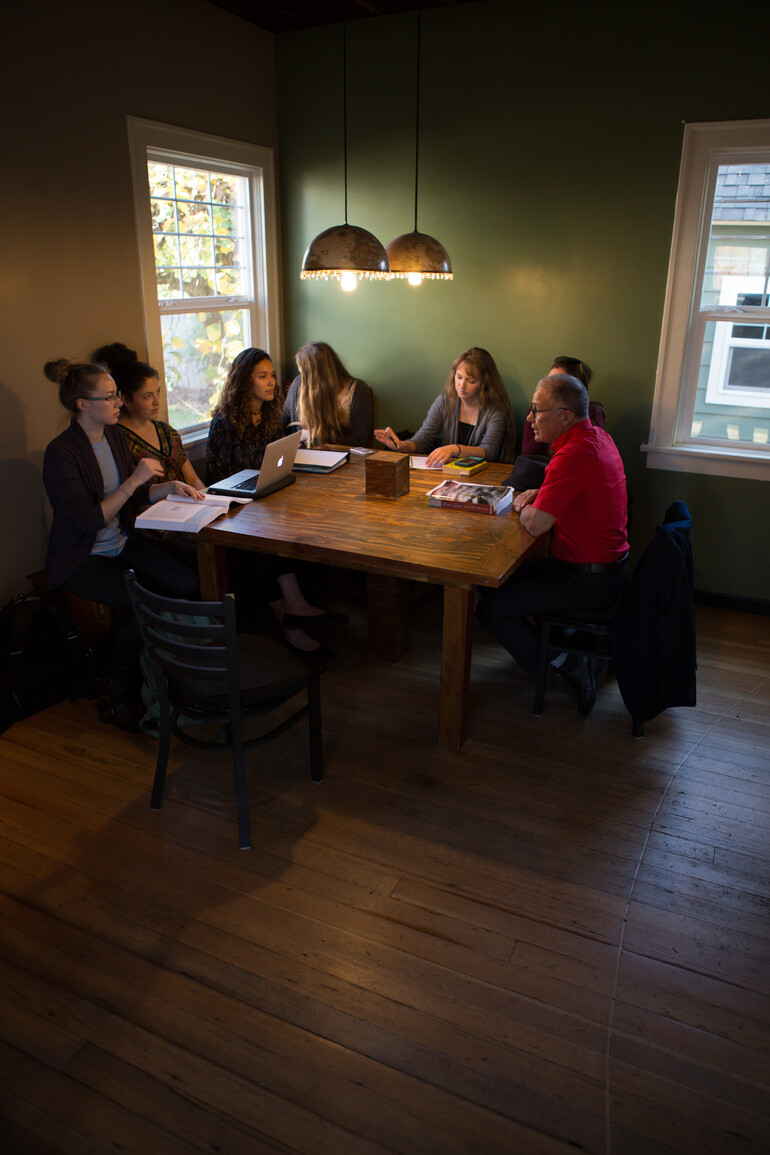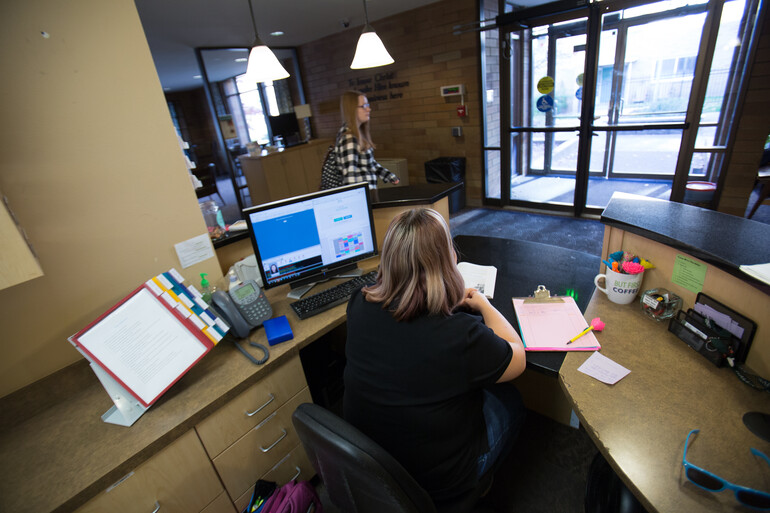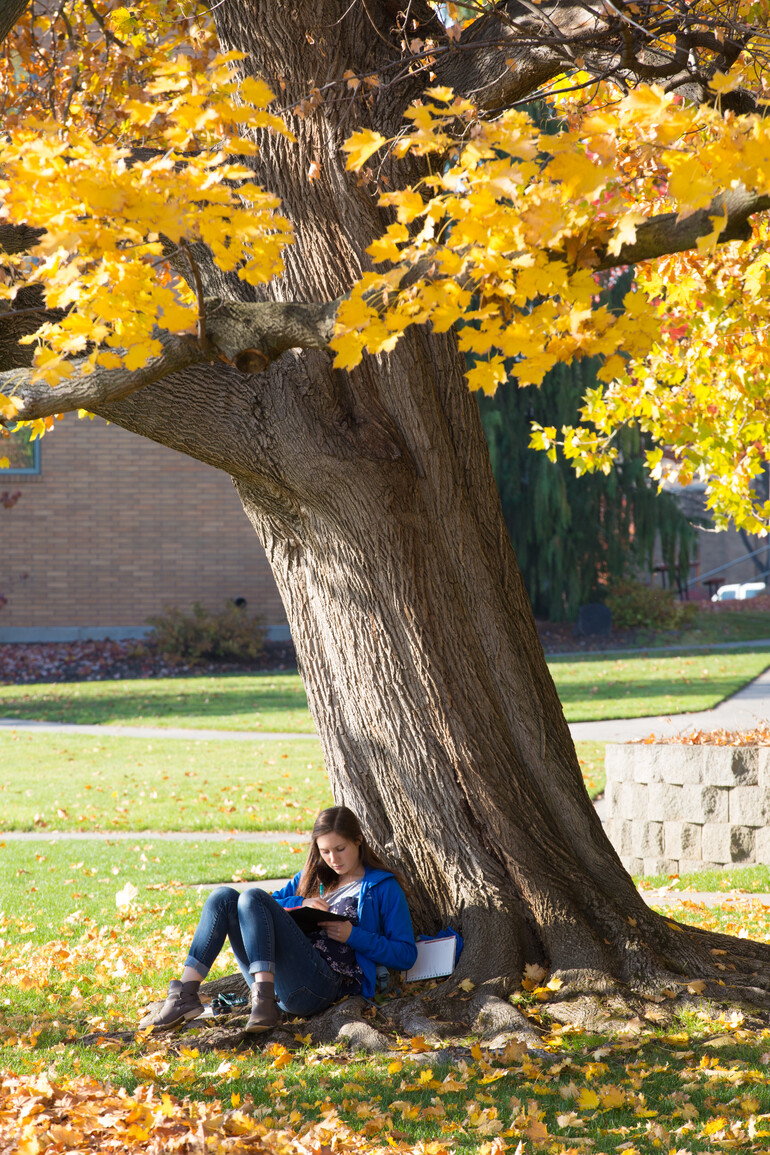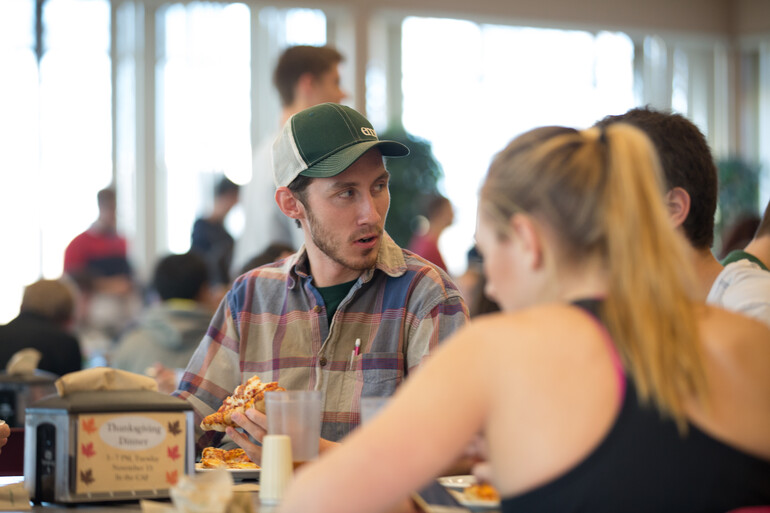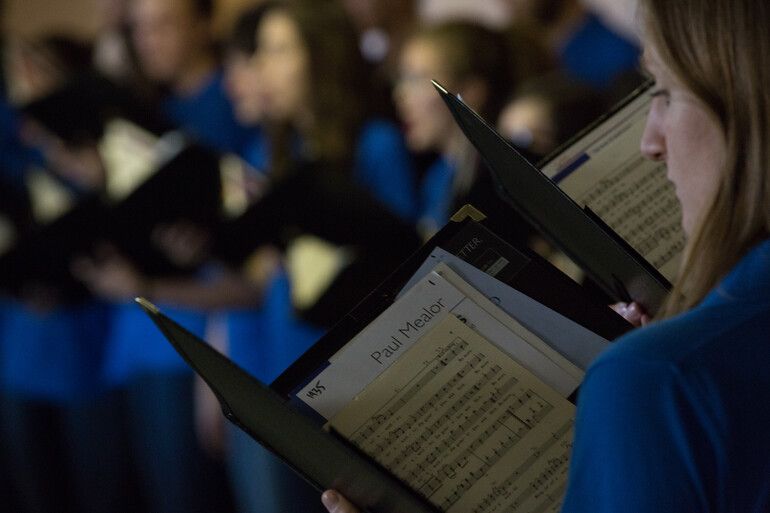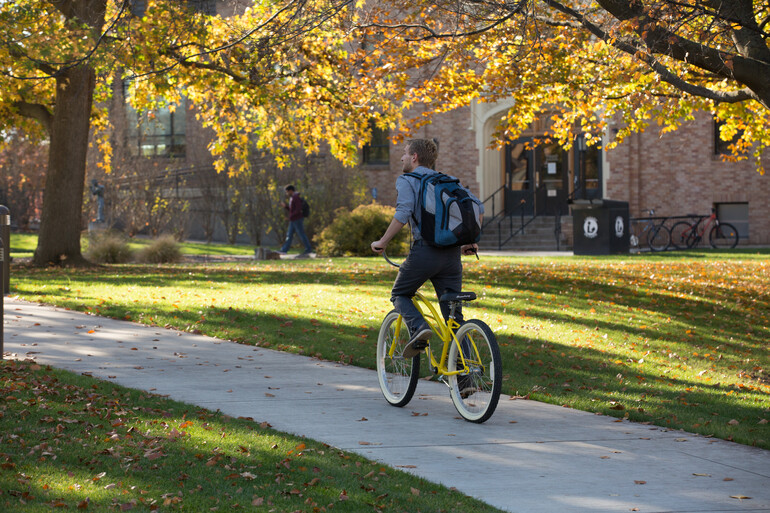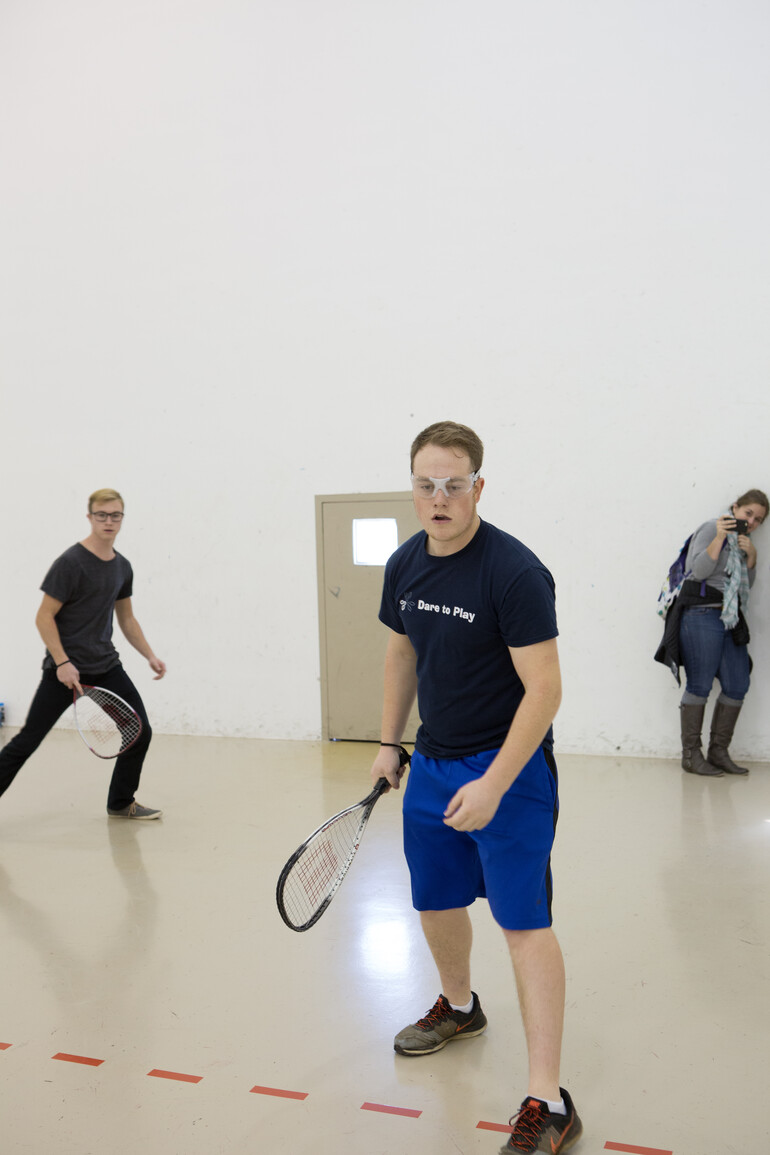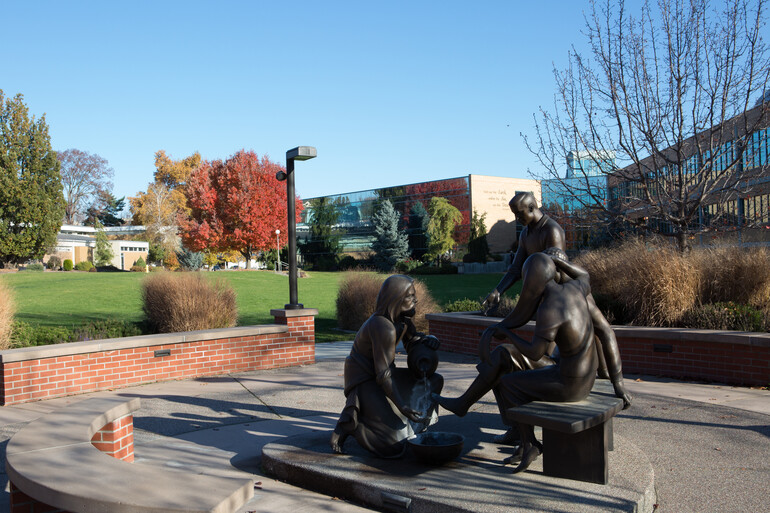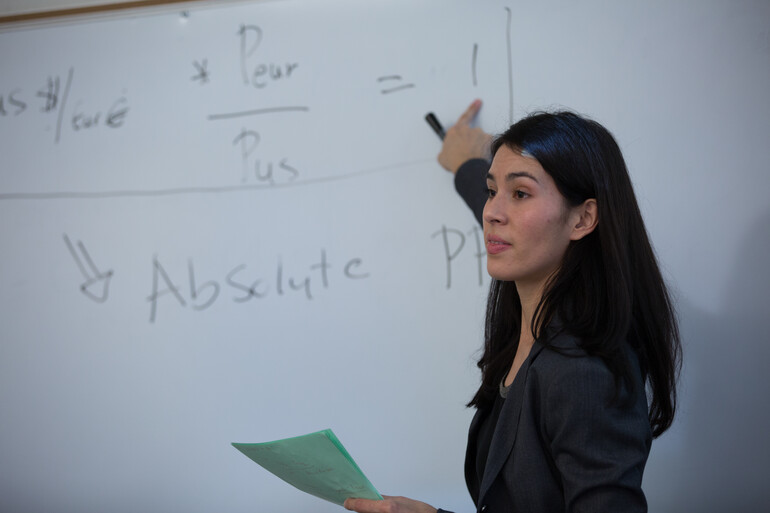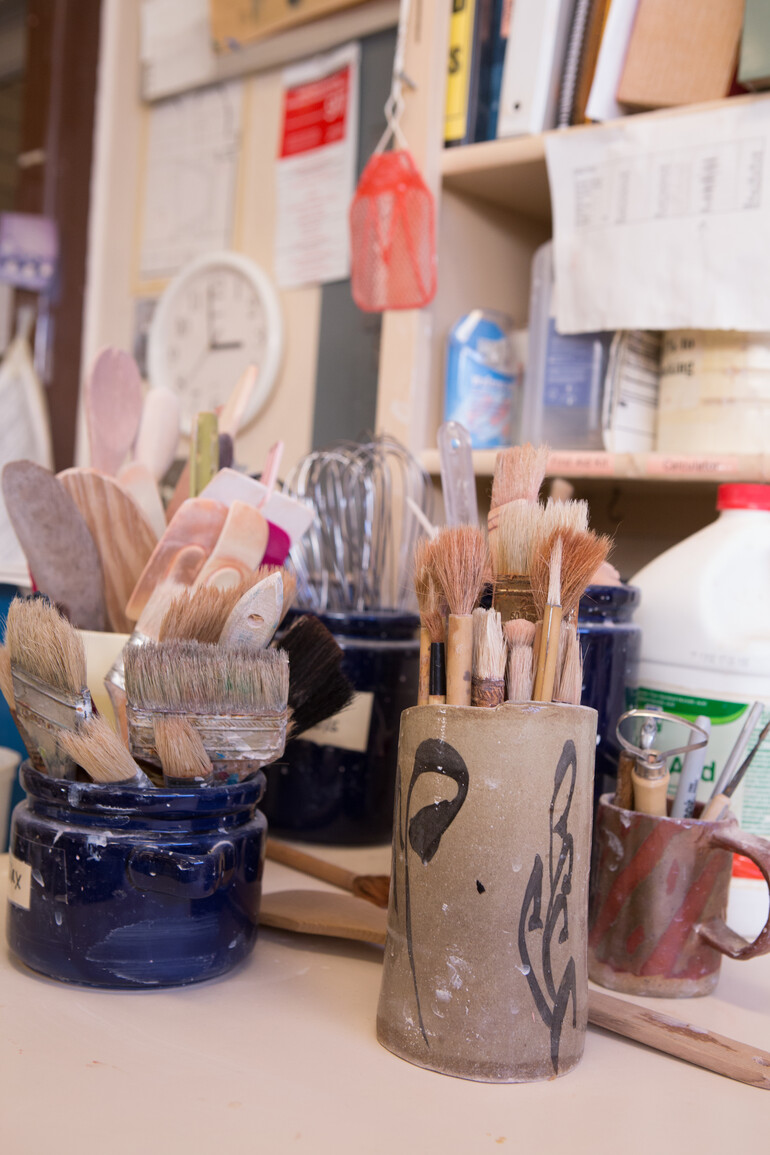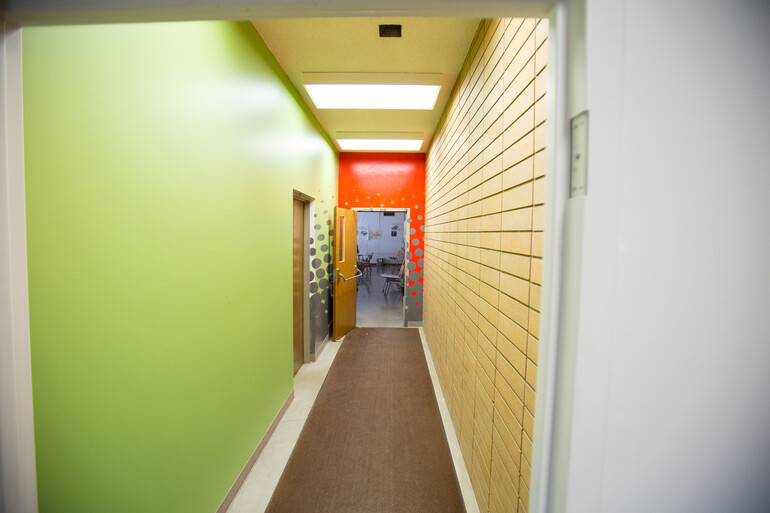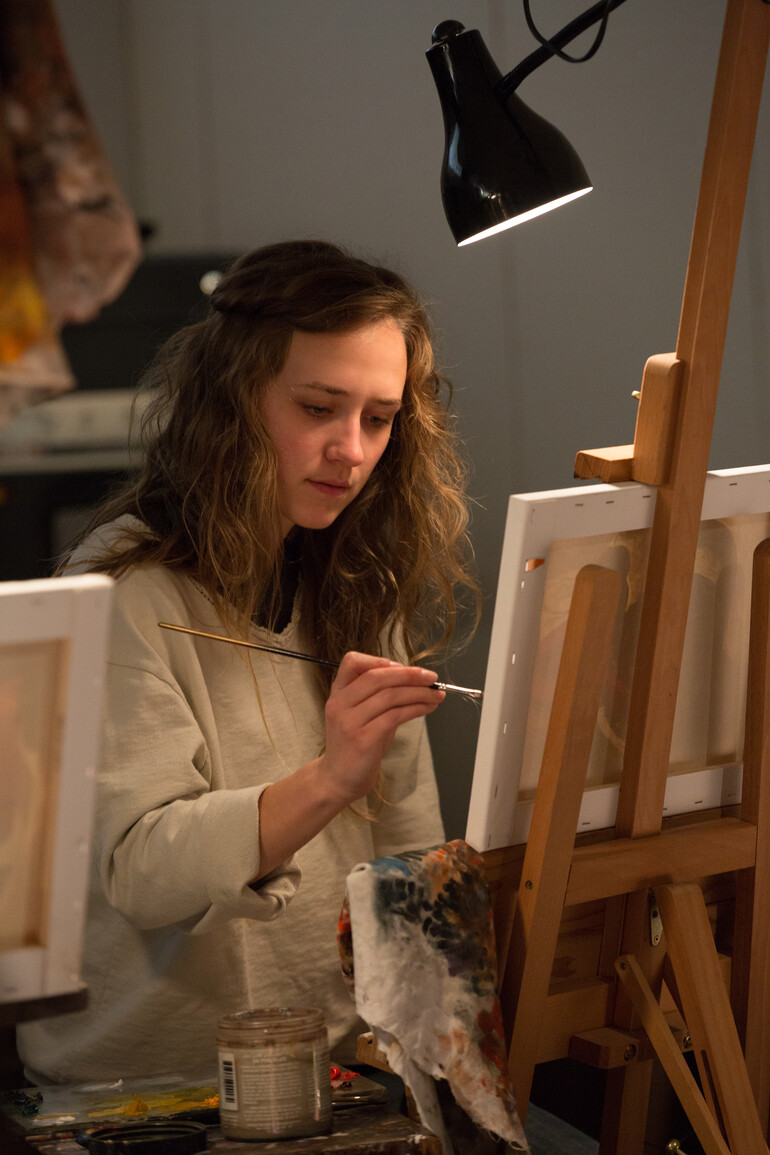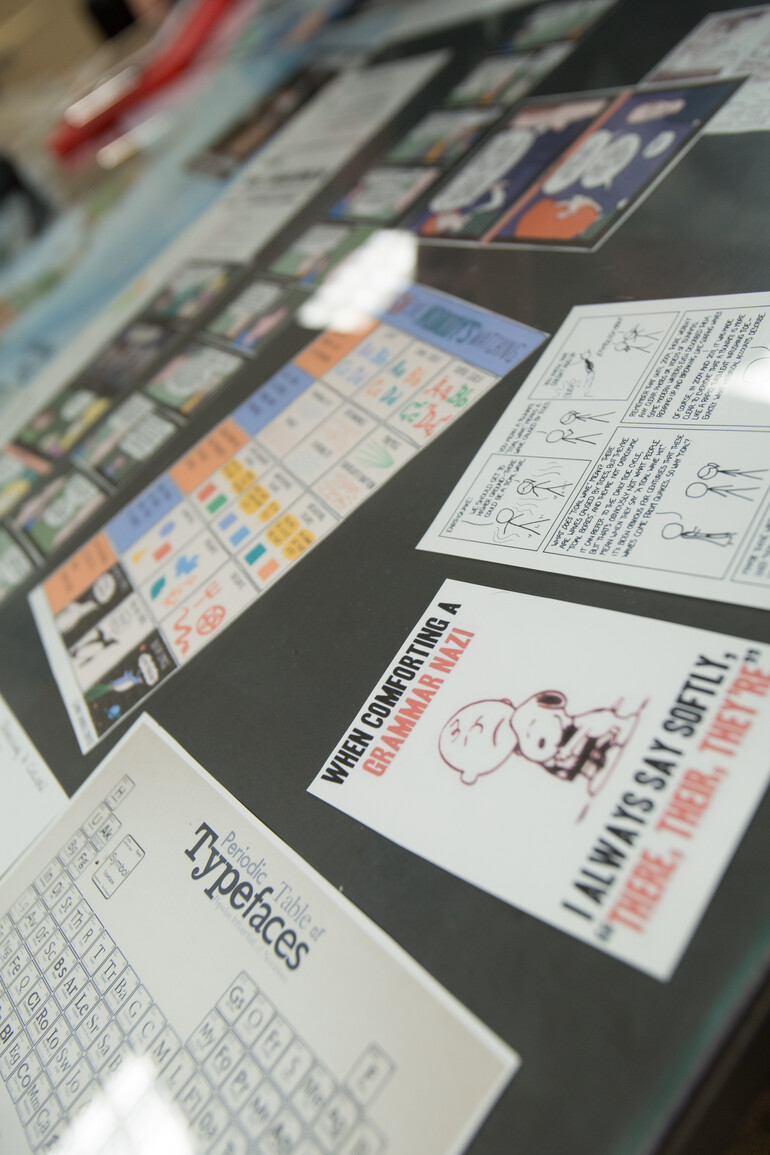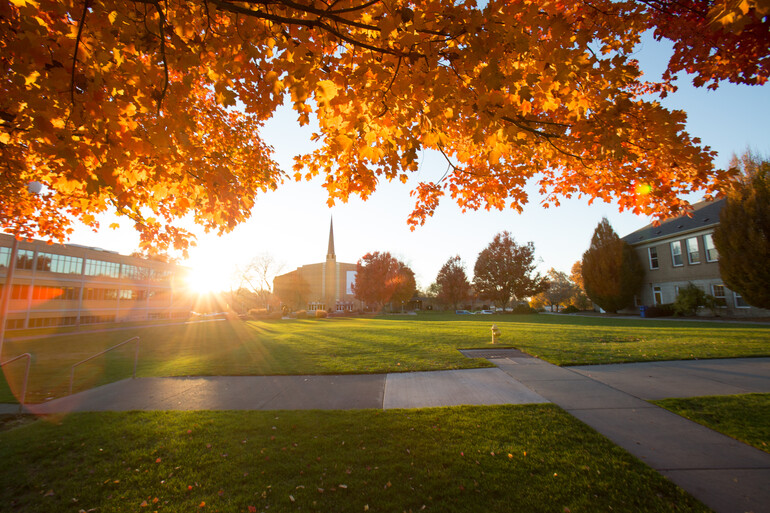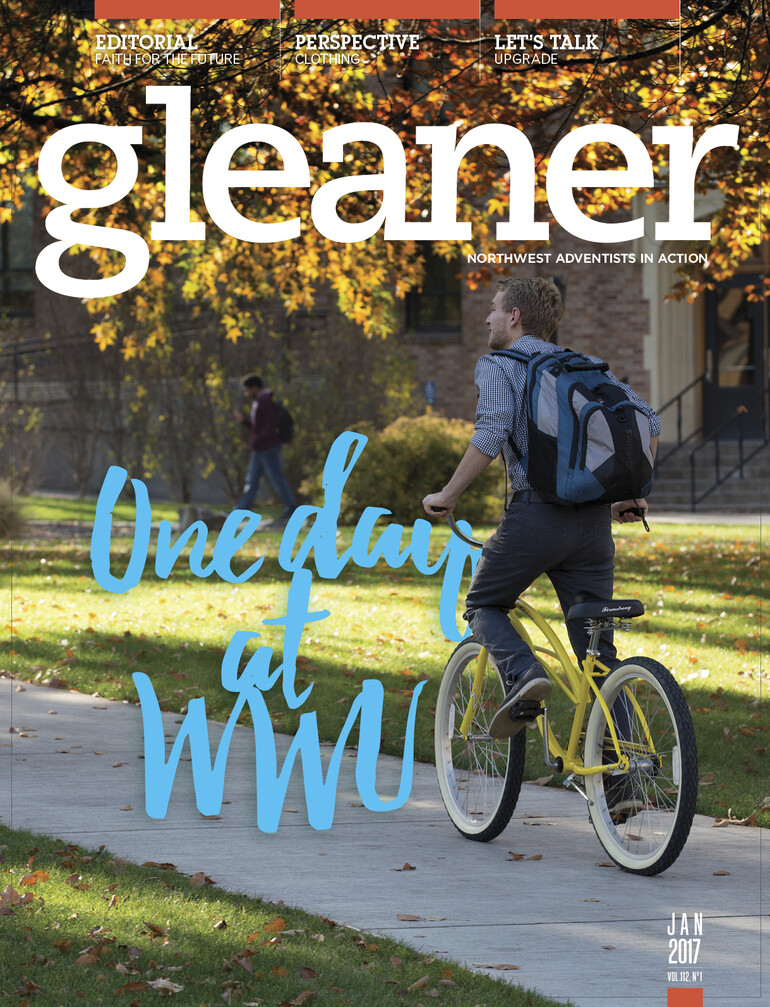7:30 a.m.
As the rising sun peeks over the top of Kretschmar Hall, a small group of students, faculty and staff gather for morning worship in Heubach Chapel to sing hymns and pray. Sam Brown, senior history major, selects “In the Sweet By and By” — a hymn written in 1867 that could very well have been sung in 1892 by the first students at what was then Walla Walla College.
“It denotes to me that certain things just don’t change over time,” says Brown. “I chose this hymn because it’s one everybody knows, and yet here it is this very old hymn.” Brown says the value of hymns like this is “the sense of community and continuity over time. As things change, having something from the past to hold on to and center around is valuable.”
8 a.m.
Computer programming class definitely wasn’t on the list of class offerings for the first students at WWU, but it is now on the docket for even non-computer science majors seeking to broaden their skill set, such as David Cabbat, freshman communications major. Cabbat prepares to take a quiz at one of 34 new flip-top workstations, which allow the growing number of computer science and engineering students to use either a built-in computer screen or a flat desktop surface.
9 a.m.
As the energy on campus revs up for the day and more and more students appear, sophomore bioengineering major Jonathan Muriu crosses campus from programming class in Kretschmar Hall to general biology class in Rigby Hall.
“I’m interested in bioengineering because I want to better our lives as human beings,” says Muriu. “It’s good to apply what we know within engineering and also with living organisms and then combine that for our benefit as humans. I’m interested in prosthetics, and there’s also other things like cancer.”
For now, Muriu and his classmates are focused on the quiz they just received from Jim Nestler, professor of biology, about the central nervous system.
10 a.m.
Keyara Williams, sophomore communications major, is on her way to the library — tea cup in hand and laptop tucked in her backpack — to work on a paper for Media Writing class.
“I like doing my work here in the library instead of in my room, especially because I get mega distracted in my room. I also go to The Atlas a lot, but that’s also kind of distracting. It’s a lot easier to focus here. Since everybody else is doing work too, they’re not really trying to bug you.”
11 a.m.
Also in the library is Sarah Ojeda, senior Spanish major, who is putting the finishing touches on a presentation for her next class, Rhetoric of Western Thought.
“We each present a chapter from the textbook,” she says. “It’s my turn to present Chapter 6. It’s about neoclassicism and the Belletristic movement and Hugh Blair.”
The class is meeting today in The Atlas, a popular gathering space on campus run by the Associated Students of Walla Walla University (ASWWU) where students can purchase hot drinks and study individually or in small groups.
Ojeda is working on a major in Spanish, a minor in art and an endorsement in secondary education. One day she would like to teach Spanish and art and, who knows, maybe Rhetoric of Western Thought.
11:30 a.m.
The lobby of Foreman Hall is quiet at 11:30 a.m., but front desk worker and sophomore social work major Alecks Mallory says, “It’s definitely not always quiet. It’s quiet during the day when there are classes; in the evening it gets much busier.”
Mallory is one of many students who work on campus — a long tradition at Walla Walla University — at jobs ranging from teacher’s assistants to custodians to social media assistants. Part of her responsibilities include keeping a door activity report of students who arrive after the doors lock at midnight. “I like the social aspect of my job,” she says. “I get to interact with a lot of people, and that’s really enjoyable.”
Noon
The cafeteria is packed at lunchtime, but no one seems to mind the lines that weave past each other heading to the stir fry station, the sandwich bar, the pizza deck or the main line, which offers tacos today.
Sabrina Mapes, freshman psychology major, checks her phone and chats with friends while she waits in the sandwich line. She says she usually eats sushi, sandwiches or salad for lunch and opts for pasta or something from the main line for dinner.
“It’s nice to come here to the caf,” she says. “You get that cafeteria anxiety at first when you’re trying to find a seat, but once you find new friends it’s really nice to sit down to talk — just to have time to interact with people and hear about their day. It’s nice downtime.”
Noon
In the Alaska Room next door to the caf, the university is hosting a luncheon to honor WWU alumni veterans. I Cantori, the select university choir, warms up outside and then files into the room where they perform three numbers. There is no rest for a few members of the choir who, after the performance, sprint across campus to their next class.
1 p.m.
Fortunately for the I Cantori members sprinting to class, campus chaplains Paddy McCoy, Tommy Poole and Katie Palumbo are on front campus handing out “oranges, bananas, cookies and love.”
“Once a week we go to different locations on campus for an hour or two and hand out some goodies and just check in with students,” says Poole.
For the team of chaplains, whose office is located out of the normal traffic patterns for students, this “mobile chaplain” outreach helps keep them connected.
1:20 p.m.
For Danny Rippe, sophomore engineering major, a little physical activity during racquetball class in the middle of the day is the perfect way to “take your mind off the stresses of the rest of the day.”
His playing partner for the day, Connor Hubin, freshman engineering major, says that exercise definitely helps him think better and focus more. “It’s a good break from the books,” he says.
Both Rippe and Hubin play on an intramural flagball team in the evenings and enjoy making time regularly to play basketball and work out in the fitness center at the Winter
2 p.m.
“I feel very strongly about the need to help other people, especially as a Christian,” says Sara Bumgardner, junior sociology major. “I think God calls us to help the poor and the needy. I want to be able to spend my life doing that.”
This afternoon, Bumgardner is in International Trade and Finance class. “I’m also a business minor,” she explains. “I thought this class might be interesting and relevant to my goals because finance issues come up in politics all the time, and politics are closely related to social justice issues as well. I thought this might be an interesting class to take to get a better understanding of how money works in the world.”
3 p.m.
The lab for painting class feels at first like walking into a spa — lights are low, voices are hushed. Serious work is underway. Students are focused.
Sarah Pierce, senior double major in industrial design and art, is working on a still life lab project that involves painting something transparent, something colorful, and something reflective.
Pierce has worked on this lab project for three days. “The first day we set up our still lifes and did a basic outline drawing. The next day we did the underpainting. And then today, we’re trying to make it more and more detailed. I might even need more time after today. We will just see.”
4 p.m.
As the day winds down for many, The Collegian staff of 33 gears up for an evening of work on the weekly student newspaper. Matthew Moran, senior double major in bioengineering and music, started as a graphic designer for the paper before taking on the role of editor this year.
“I really believe in the mission of this school and the mission of the church,” he says. “I don’t want The Collegian to be something that would hinder that. I want to facilitate growth, not only academically, but also spiritually.”
“[Working on The Collegian] seemed like a good experience for me,” he says. “I was curious to see what kind of leadership skills I have, how I am able to manage and work with people, and how I can make things happen. I’m really blessed to be at an institution like this, which fosters a high academic standard, but which also fosters community with different kinds of people.”




